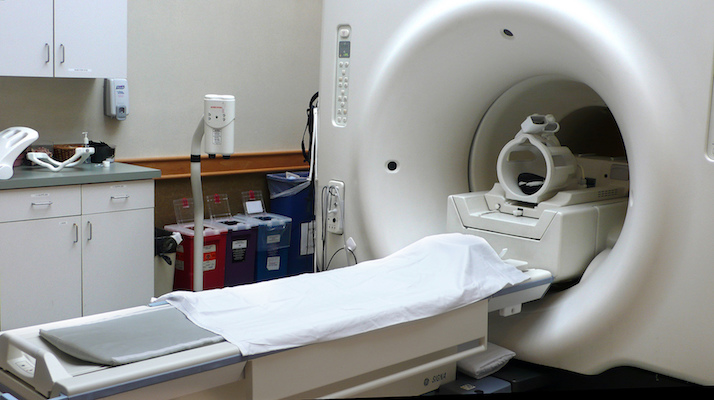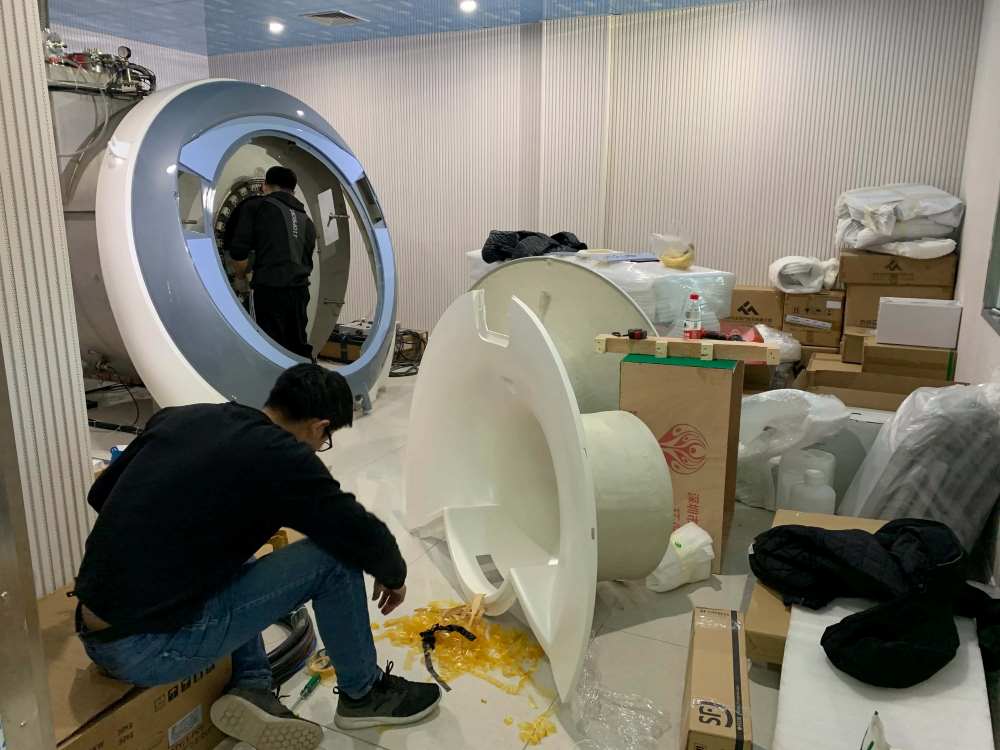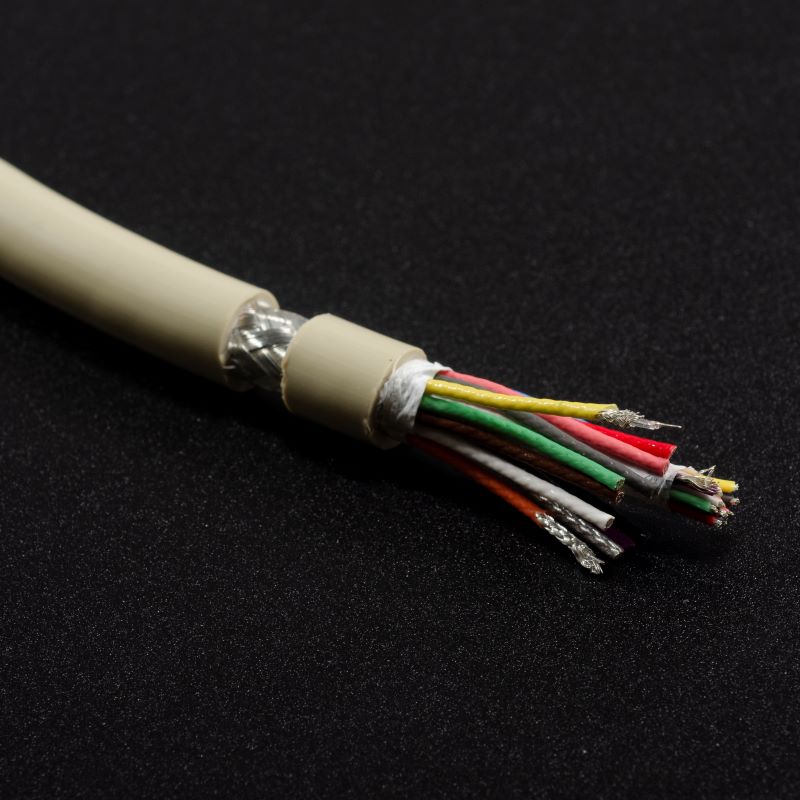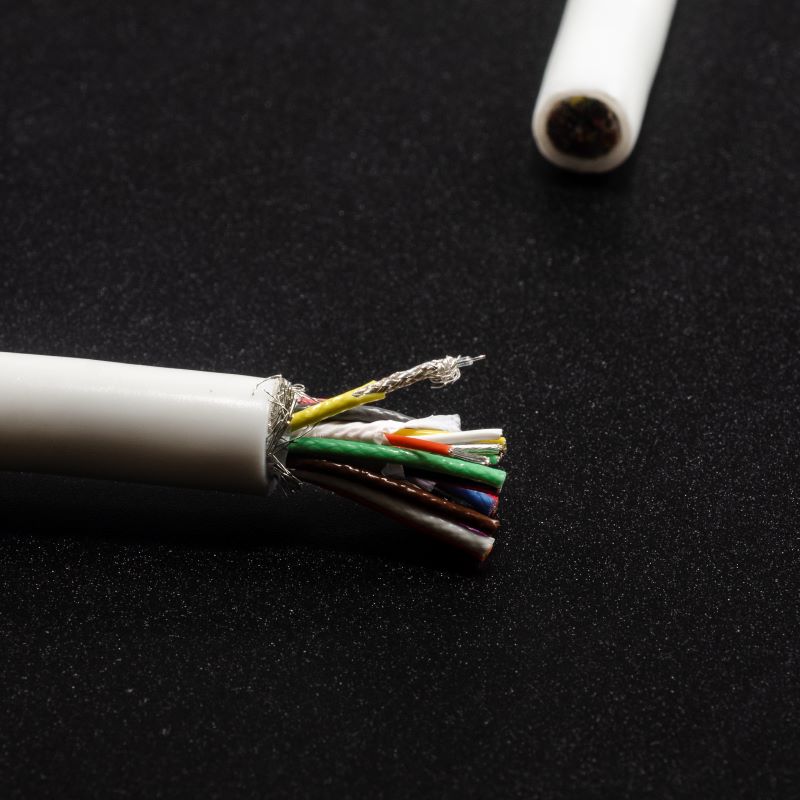MRi Compatible Multi Coax cable-MRI Cable for MRi RF Coil
The function of an MRI RF system is very similar to that of a radio wave antenna. It emits radio waves, specifically RF pulses, into the human body, causing the hydrogen protons in the body tissues to undergo NMR (nuclear magnetic resonance). The MRI signals are also a form of radio waves, which can be received by RF coils, which composes of MRi Compatible Multi Coax cable
Components of An MRI RF System:

How does an MRI RF System work:
- The main NMR unit generates digital pulse waveforms based on the selected pulse sequence.
- The digital pulse waveforms are converted into analog signals through a digital-to-analog converter.
- The analog signals are modulated and amplified to drive the transmitting coil, which excites the resonance of H nuclei in the imaging area, generating nuclear magnetic resonance signals.
- The weak nuclear magnetic resonance signals are amplified by a preamplifier, and then processed through demodulation, filtering, analog-to-digital conversion, preprocessing, Fourier transformation, etc., to finally reconstruct the MRI image.
Why Does an MRI Equipment Require Multiple Surface Coils?
The most important reason is that the signal-to-noise ratio of the image is directly affected by the reception coils. The closer the receiving coil is to the area being examined, the stronger the received signal. Moreover, smaller coils receive lower levels of noise.
types of rf coils in mri
Based on their functions:
transmission coils:only transmit RF signal
Coils that both excite resonance in the human body and receive the MRI signal.
For example, body coils installed inside the MRI machine serve the dual purpose of transmitting RF pulses and receiving signals.
Coils that only receive the MRI signal(i.e MRI receiver coil).
Most of the coils used in clinical settings for various body parts belong to this category. Surface coils, including phased-array coils, are examples of such receiver-only coils.
Based on their coverage area
They can also be classified into five categories based on their coverage area:
whole volume coils (body coils);
partial volume coils (Knee Coil);
surface coils (spinal surface coils,);
intracavity coils (rectal coils);
phased array coils.




Transmission coils are generally installed inside the main magnet and are not visible in normal circumstances. On the other hand, reception coils are usually surface coils, such as Siemens’ “large flexible” and “small flexible” coils, as well as GE surface coils. There are also some coils that can both transmit RF pulses and receive signals, including head quadrature coils and body coils.
Head quadrature coils and body coils
With the advancement of technology, phased-array coils have been invented to further improve the acquisition speed and SNR (signal to noise ratio) of images. Phased-array coils are composed of multiple sub-coils and are used in conjunction with multiple data acquisition channels. Common examples include 8-channel phased-array coils, 16-channel phased-array coils, 32-channel phased-array coils, and so on. The application of phased-array coils and parallel acquisition techniques has improved the acquisition speed and signal-to-noise ratio of MRI signals, thereby shortening the acquisition time.
Each coil can be used individually or in combination. For example, Siemens’ Total Imaging Matrix (Tim) technology allows for the free combination of multiple independent coils to achieve panoramic imaging with a large field of view. Combining head quadrature coils, body coils (2), and spinal coils can enable imaging for a wide range of body scans.
RF coaxial cable choosing in mri rf coil design
Being different from the other application RF coaxial cable, MRI cable for MRi RF Coil are usually two types:
- Pure Multi coax cable without DC wire (signal wire)
- Composite cable with multi coax cable and signal wires(whose numbers are usually equal to or more than that of the coaxial rf cables
Following are some MRi cable for Reference:
- 10 wire MRI Cable:10x Coax 30AWG (10 Coax RG178)
- 24 wire MRI Cable:12x 32AWG Coax+12×26AWG
- 28 wire MRI Cable :8x 32AWG Coax +20×28AWG
- 32 wire MRI Cable:12x 32AWG Coax +20×28AWG
- 32wire MRI Cable : 16x 30AWG coax RG178+16X26AWG
- 32 wire MRI Cable:12x32AWG Coax +1×21 AWG+19×28AWG
- 48 wire Multi coax cable :16x 30AWG coax RG178+32X 26AWG
- 48 wire Multi coax cable :24x 30AWG coax RG178+24X 26AWG
- 68 wire Multi coax cable: 9x 26AWG coax+9x 32AWG coax+46x28AWG
Coaxial RF Cable: Coaxial RF cable is a commonly used structural type. Due to the concentric position of the inner and outer conductors, electromagnetic energy is transmitted within the dielectric material between the inner and outer conductors. This type of cable has significant advantages such as low attenuation, high shielding performance, wide frequency band, and stable performance. It is typically used for transmitting RF energy ranging from 500 kHz to 18 GHz. There are two common types of RF coaxial cables: 50 ohm rf cable and rf 75 ohm coaxial cable. The 75Ω coaxial cable is commonly used in CATV networks, thus referred to as CATV cable, with a transmission bandwidth of up to 1 GHz.
As mentioned above, in MRI systems, 50ohm coaxial cable (as inner wires in a multi coax cable) is widely used, in the form of RG 178 or custom rf cables with 32AWG conductor (Compared with RG 178,which is 30AWG,the 32AWG 50 ohm rf cable can decrease the overall diameter of the cable, and can go through some holes in a MRI machine) . During maintenance of an MRI system, if original RF coaxial cables cannot be obtained or the cost is too high, repairers sometimes use compatible multicore RF coaxial cables that are suitable for MRI, such as RG178 (conductor specification: 30 AWG), or custom-made non-standard coaxial cables with a characteristic impedance of 50Ω (for example, conductor specification: 32 AWG).
Key factors for MRI Cable
The imaging principle of MRI is based on the interaction between magnetic fields and radiofrequency pulses, which causes the hydrogen nuclei (H+) within the human body to undergo precession and generate radiofrequency signals. Therefore, if there are H+ ions present in the material of the RF coil, it can impact the imaging process of MRI. A MRi Compatible Multi Coax cable must meet the following requirements:
1 Electronic properties,take 50 ohm rf cable for example:
Characteristic impedance:50±3Ω (it is more strict than regular tolerance 50±5Ω, Leoni,s tolerance is 50±2Ω
- Delay:4.9ns/m
- VSWR:≤1.3(12~300MHz)
- Attenuation typ.(dB/100m):12MHz≤21.7,63MHz≤49.5,123MHz≤69.1,135MHz≤72.5,300MHz≤108.8 ,350MHz≤155.2,400MHz≤175.1,450MHz≤190.2,500MHz≤210.1
2 Non-magnetic Material shall be used.
3 Jacket material must be able to pass Proton Test(No H+Proton)
As an MRi compatible rf cable manufacturer, the most trustable way to make sure if the multi coax cable is MRI compatible or not is that:” install it in a MRI machine and study the MRi result. This is the way we are going when we are custom a MRI cable for customers thanks to their support to us.



